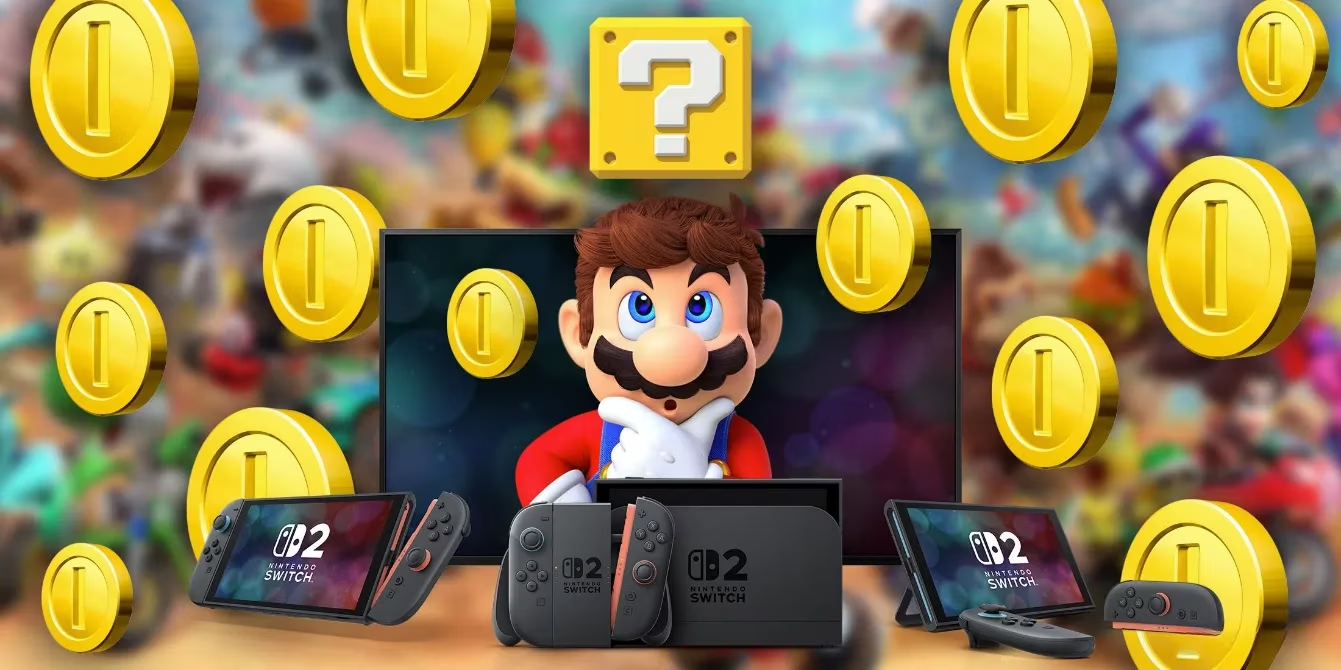Nintendo Switch 2's Pricing Labyrinth: Joy Meets Confusion
Discover the surprising and perplexing pricing of Nintendo Switch 2, featuring blockbuster titles and regional disparities that challenge value perceptions.

The announcement of Nintendo Switch 2's launch lineup should have been a triumphant fanfare—a symphony of 20+ titles, double the original Switch's offering, featuring heavyweights like Mario Kart World alongside third-party giants like Cyberpunk 2077. Yet the celebration felt like confetti falling into quicksand; excitement dissolved into bewildered murmurs as pricing details emerged. Gamers found themselves wandering through a digital bazaar where price tags shifted like desert mirages—one moment promising adventure, the next demanding a king's ransom. That initial thrill curdled into something heavier, a blend of anticipation and betrayal simmering beneath the surface, leaving players to wonder if Nintendo had forgotten the simple joy of accessible play.
🎮 The Golden Catalogue & Its Thorny Price Tags
At first glance, the Switch 2's roster resembles a treasure chest overflowing with gems:
| Game Title | Type | Price (USD) |
|---|---|---|
| Mario Kart World | First-Party | $80 |
| Cyberpunk 2077 | Third-Party | $70 |
| Donkey Kong Bananza | First-Party | $70 |
| Zelda: TOTK (Remaster) | Switch 2 Edition | $80 |
| Zelda: BOTW (Remaster) | Switch 2 Edition | $70 |
But this glittering surface hides bewildering cracks. Mario Kart World’s $80 tag isn't just steep—it’s a tectonic shift, towering above even PlayStation and Xbox AAA pricing like an overgrown sequoia in a meadow of saplings. The dissonance feels physical, like biting into what appears to be chocolate only to taste cardboard. Third-party titles joining at $70 adds salt to the wound, making Nintendo’s premium seem less like value and more like vanity.
🌍 Regional Riddles & Physical Paradoxes
The confusion deepens across borders. In Spain:
-
Digital Mario Kart World: €80 (~$90) 💻
-
Physical copy: €90 (~$100) 📀
This regional disparity is as jarring as finding summer snow—a baffling fracture in Nintendo’s typically consistent pricing. For decades, digital and physical copies stood as identical twins; now they’re estranged cousins charging different tolls at the same bridge. The inconsistency whispers of logistical chaos, leaving collectors and digital devotees alike scratching their heads over which version offers less regret.
🔄 The Remaster Riddle: Old Wine, New Price Tags
Perhaps the most surreal twist involves the Switch 2 Editions—remastered classics wearing emperor’s new clothes. Tears of the Kingdom (2023) and Kirby and the Forgotten Land (2022) command $80, while 2017’s Breath of the Wild sits at $70. Yet Donkey Kong Bananza—a brand-new 3D platformer—dares to cost less than these touched-up relics. It’s like watching someone frame a grocery receipt as fine art: technically possible, emotionally confounding. The pricing hierarchy feels inverted, where nostalgia outweighs innovation by $10 bills.
Meanwhile, free performance patches for other games hover like uninvited specters at this gilded banquet. Why pay $80 for Zelda remasters when Metroid Prime 4 might get visual upgrades at no extra cost? The dissonance chafes, especially when Nintendo Switch Online + Expansion Pack subscribers get certain remasters free—a gesture that somehow makes the standalone prices feel more absurd, like charging admission to a public park.
💥 Fan Fury: The Geyser Erupts
Across forums and social media, reactions erupted like pressurized magma:
-
"$80 for Mario Kart? It’s not a golden kart!" 😤
-
"Why does Spain pay more for plastic than data?" 🌐
-
"Remasters costing more than new games feels like time-travel robbery" ⏳
The backlash isn’t just about cost—it’s about fractured trust. Nintendo built its legacy on whimsy, not wallet-emptying strategies. This pricing labyrinth transforms excitement into exhaustion, forcing players to become amateur accountants just to justify their joy. The sting is personal: that childhood magic of unwrapping a cartridge now replaced by adult hesitation over digital receipts.
❓ Unanswered Whispers in the Mushroom Kingdom
As launch day approaches, questions linger like uninvited ghosts:
-
Will $80 become Nintendo’s new normal, or is this a launch experiment?
-
Do regional price differences hint at deeper corporate disarray?
-
Can joy survive when every game purchase feels like a risk assessment?
For now, players hover between hope and skepticism, their excitement tempered by caution. The Switch 2’s library remains a feast, but the menu prices leave a bitter aftertaste—a reminder that in gaming’s evolving landscape, even magic kingdoms must confront the weight of their own crowns. 🎭